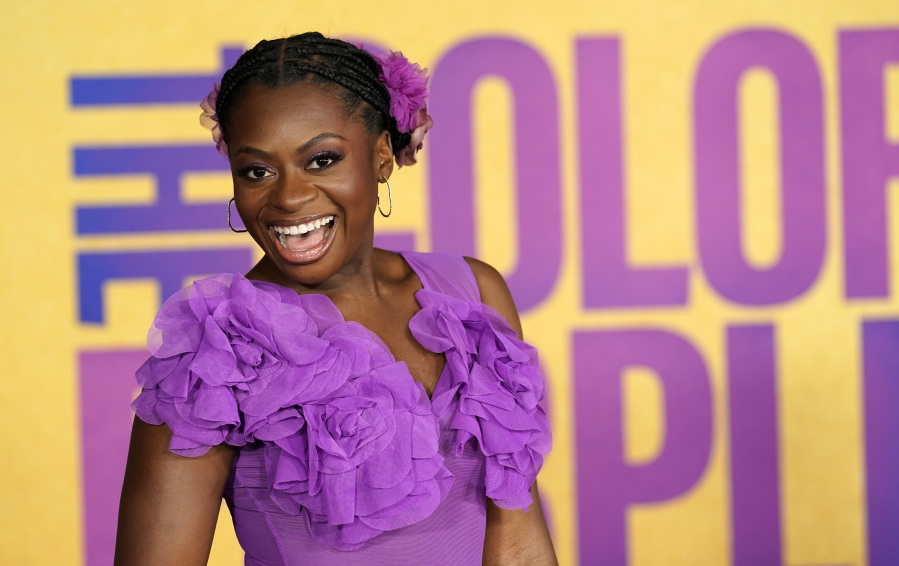NEW YORK — “I think it pisses God off if you walk by the color purple in a field somewhere and don’t notice it,” Shug tells Celie in Alice Walker’s “The Color Purple.”
In nature, among the priestly and royal, as a symbol of independence, pride and magic, purple is weighty in history and culture. Now, with the Christmas Day opening of the second film based on Walker’s 1982 book, purple takes a seat at the box office after the historic popularity of “Barbie” and all things pink.
Consider it a many-layered cultural counterpart to its frothier cousin.
Power, ambition, luxury. Purple reflects them all. It also expresses creativity, independence, pride, peace, mystery and magic.
In contemporary history and fiction, it often represents something sought dearly. In the early 20th century, purple attire and signage signified loyalty and dignity among the suffragists. In Walker’s novel, Celie, the main character, wants a pair of purple shoes but can’t afford them, so she settles on blue.
Some ways to think about purple, the hues nestled between blue and red:
Purple, the dye
The Romans conquered the Greeks in the second century B.C. and returned home with lots of pigments and dyes, writes Victoria Finlay in “The Brilliant History of Color in Art.” The most celebrated was “purpura,” which turned into a fashion phenom made with secretions of certain mollusks. The liquid transformed into purple when left out in the sun.
When Julius Caesar traveled to Egypt in 48 B.C. and met Queen Cleopatra, he noted her love of purple and embraced it himself. It’s a love later taken up by Byzantine emperors. But before them, Caesar decreed that only Caesars could wear togas dyed completely purple.
Many, MANY mollusks were required to make purpura, which sometimes wasn’t the color we know today. Finlay wrote that at least 250,000 were needed for half an ounce of dye. Ancient Tyrian purple, named for the town of Tyre in what is now southern Lebanon, was also rose, bluish red or velvety black, she writes.
Purple was reserved for royalty, priests and nobles at various times in history and in various places.
By the 14th century, the secrets of Tyrian purple were lost, according to the University of Chicago Library’s 2007 exhibition “The Origins of Color.” But in 2001, through trial and error, the technique for making it resurfaced. Well before then, synthetic dyes, including purple, were available.
Purple, in song
Prince’s “Purple Rain.” Jimi Hendrix’s “Purple Haze.” Juice WRLD’s “Purple Devil.” The rockers Deep Purple. The Grammy-winning song “Deep Purple,” a No. 1 Billboard single for April Stevens and her brother, Nino Tempo, in 1963.
Purple has been peppering songs for decades, but no musical artist has been more closely aligned with the color than Prince. He became The Purple One after he and his band, the Revolution, put out “Purple Rain” in 1984 and a won a Grammy for it, along with an Oscar for the score to the companion film.
Though the song peaked at No. 2 on Billboard’s Hot 100 in 1984, it forever connected Prince with the color. And he leaned in with his purple attire, purple guitar and purple piano. After his 2016 death, his estate worked with Pantone to come up with an official Prince purple, dubbed “Love Symbol #2.”
Of the song’s meaning and title, Prince once explained: “When there’s blood in the sky … red and blue equals purple. Purple rain pertains to the end of the world and being with the one you love and letting your faith/God guide you through the purple rain.”
Prince’s Paisley Park estate outside Minneapolis remains bathed in purple at night.
In creating a world in sound, “purple doesn’t have as clear a set of connotations” as some other colors, like the sadness of blue or the rage of red, said Nate Sloane, who specializes in the history of popular music and jazz at the University of Southern California’s Thornton School of Music.
For musical artists, he said, that’s freedom.
“Its ambiguity means you can explore more emotions and concepts that are less clear and established,” Sloane said.
Purple, on canvas
Monet, Chagall, Derain, Rothko, Matisse, Klimt. All were admirers of purple.
The color is said to have first surfaced in art during the Neolithic era, writes Hannah Foskett at the site Arts & Collections. The pre-Raphaelites in Britain especially loved purple.
Monet stands out for his use of violet in his Lily, Haystack, Snow and Rouen Cathedral series of paintings.
Another interpretation of purple, Foskett writes, is that it tires the eyes, “often symbolizing lust or sorrow in major artworks.”
Color, in visual art, was helped along by the American portrait painter John Goffe Rand. In the 1840s, he invented a collapsible tube of tin in which to put his paint, rather than the pig bladders he and his counterparts had been struggling with for years, according to Finlay. With the invention of paint tubes, there were suddenly dozens of new pigments, including manganese violet.
“It was the first opaque, pure, affordable, mauve-colored pigment,” wrote Finlay, “and it was seen as a wonder.”
Purple, the prose
The term “purple prose” stretches back to circa 18 B.C. and the “Ars Poetica” of Horace, according to Charles Harrington Elster in his 2005 book, “What in the Word?”
Generally speaking, purple prose came to mean writing that is laden with flowery descriptors and/or an oppressive structure with no real payoff to a reader.
“Purple prose doesn’t seem to have become wholly pejorative until the 20th century when steep declines in the vocabulary and reading comprehension of college-educated Americans caused a panic in the education establishment and the newspaper industry,” Elster wrote.
A blog post from the publishing site Reedsy offers this made-up example: “The mahogany-haired adolescent girl glanced fleetingly at her rugged paramour, a crystalline sparkle in her eyes as she gazed, enraptured, upon his countenance.”



